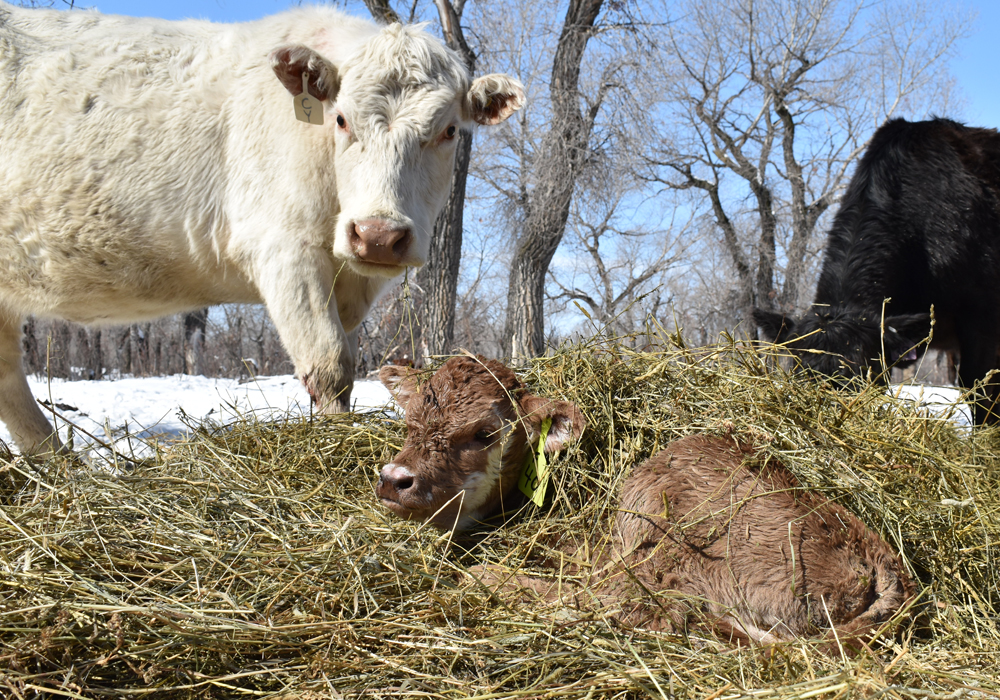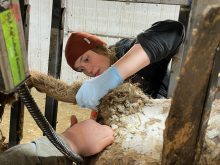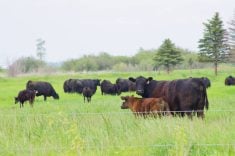With calving season upon us again, I’ve been reflecting on the wide range of things that can go wrong in fetal development.
Abnormalities can affect any system in the body and range in severity. The most serious and severe abnormalities cause spontaneous abortion or neonatal death. Others are mundane and are only detected by chance.
Congenital abnormalities include those changes that are present at birth, which distinguishes them from diseases that occur over the life of an animal.
Among the most spectacular fetal abnormalities is the condition known as a fetal monster. Something goes terribly haywire in the very earliest stages of development and the fetus is grotesquely malformed. Changes can include things like extra limbs and heads.
Read Also

Manitoba extends Crown land rent freeze
Manitoba government links the continued rental rate freeze on grazing and forage leases to economic and environmental challenges facing the industry
Another astonishing failure of normal development creates the lyrically titled amorphous globus. In this situation, the fetus fails to develop in any appreciably normal way. The result is a ball of hair and flesh with no distinct head, body or organs.
There are also rare cases of so-called inside-out calves. The fancy scientific term is schistosomas reflexus. The spine is reflected backward so head and pelvis meet. Organs develop outside the body rather than being encased in the chest and abdomen as nature intended. These calves often result in difficult births and may require a C-section or fetotomy, which is the dissection of the calf while in the uterus.
Calves are occasionally born with fused toes, extra toes and even extra limbs. Deformities of this type may not be much of an issue in commercial herds but definitely are a cause of concern for show cattle and purebred operations.
Then there are the abnormalities that are difficult to see with the naked eye. A classic example of this is an immune deficiency condition of Holstein dairy calves. A specific type of white blood cell, known as neutrophils, is unable to exit the blood vessels. Calves with this condition appear normal at birth but are highly susceptible to bacterial infections and often die of things like pneumonia.
Heart defects are another category of abnormalities that can go undetected. If a calf is born with a small hole in its heart, it might go completely unnoticed unless a veterinarian has a listen with a stethoscope or the calf dies for another reason and is given an autopsy examination. Of course, really large holes in the heart can be serious and lead to heart failure.
Sometimes the underlying cause of congenital abnormalities is a genetic defect. This is the case in osteopetrosis of Red Angus cattle, which is also known as marble bone disease. In affected individuals, bones are not remodelled properly as they grow within the uterus. This creates a situation where bones take on strange shapes. In these Angus cattle, the skull is oddly shaped and the leg bones are short and stumpy. Calves don’t live long with this condition and there is a DNA test available to help weed it out of herds.
Not all abnormal calves result from a genetic condition. Toxins and infections can also give rise to abnormal fetal development. A collection of abnormalities in the same calf, an outbreak of multiple calves affected, or even multiple herds might point to specific cause. For instance, an outbreak of fetal anomalies in European calves and lambs led to the discovery of a new viral infection, Schmallenberg virus, in the early 2010s.
Sometimes the cause of these abnormal calves is readily apparent. Calves can be born with one or both kidneys that are smaller than normal. This change is often associated with bovine viral diarrhea virus infection. Other times, these calves are truly a freak of nature with no apparent underlying issue.















